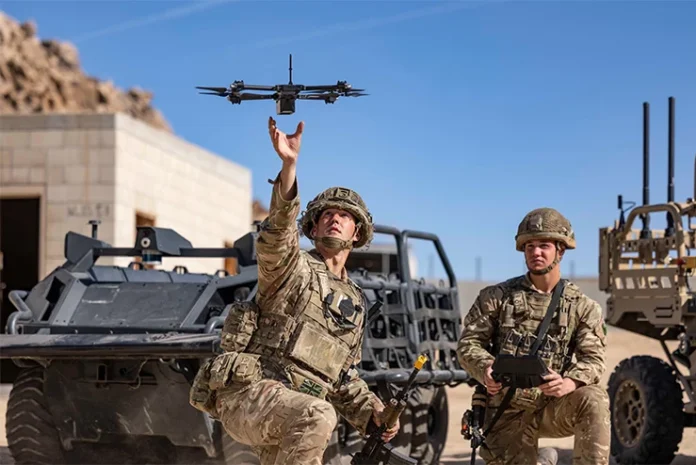London: As the US Defence Department looks to buy thousands of autonomous systems over the next few years through its Replicator initiative, Pentagon officials and industry leaders say production readiness and capacity will drive its selection process.
Deputy Defence Secretary Kathleen Hicks in late August unveiled the initiative, which aims to field a fleet of small, attritable, uncrewed systems across multiple domains over the next 18 to 24 months. Replicator is meant to change the way the department buys high-need capability to counter China’s military advantage.
Officials have been light on details about many aspects of the initiative, including where those platforms will come from and how the Pentagon will field them at such a rapid pace.
At the DSEI conference here, industry executives emphasized the need for clear signalling from the Defence Department to help companies — particularly small and mid-size firms — make smart investments in the manufacturing capacity needed to deliver on programs like Replicator.
Retired US Army Lt Gen Neil Thurgood, who previously led the service’s Rapid Capabilities and Critical Technologies Office and is now senior vice president of Anduril Industries, said during a panel discussion at DSEI that companies must not only invest in the product they’re developing but also the manufacturing capability to produce it in large quantities.
“You can’t just make the thing. You’ve got to make the thing bankable,” Thurgood said at a panel discussion.
Andrea Garrity, chief growth officer at mobile mesh networking company goTenna, stressed that companies must pay close attention to DoD messaging to ensure their supply chain can meet those demands. She noted her company moved its manufacturing to the US last year due to supply chain concerns and growing demand from US government customers.
Still, it would help to have more insight from the government into their plans, she said — especially as the military prepares for a potential conflict with China in the coming years.
On Replicator, given its short delivery timelines and potentially large quantities, some level of certainty from DoD is critical, according to Tom Foldesi, chief revenue officer at Saildrone. Foldesi said the effort could be “game changing,” especially if DoD makes its capacity and capability needs clear and consistent enough for industry to adapt its supply base to the new cadence.





